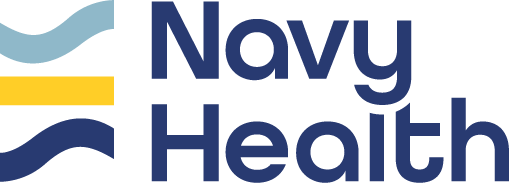As we age, it’s particularly important to ensure we are prioritising the health of our muscles in order to protect our bones and joints from potential injury. While the importance of aerobic exercises like running or swimming is widely recognised in its role of strengthening the heart and lungs, strength training often takes a backseat despite its pivotal role in injury prevention, mobility enhancement, heart health, and aiding in fat reduction.
Strength training is fantastic for anyone, at any age or stage in their life. It’s not just for fitness fanatics or bodybuilders; it’s important for everyone, including you.
If you’re completely new to strength training, taking that first step can be intimidating, however it is important to remember that everybody starts somewhere, and no matter what stage of your strength training journey you are on, there are so many great benefits which can come from incorporating some form of strength training into your exercise routine. Whether your goal is to build muscle, improve your mental health, increase strength, or simply look and feel better, strength training is an excellent way to achieve any of these goals.
There are various options to choose from, such as free weights, resistant bands, machines, and bodyweight exercises. This array of choices can be overwhelming at first, but this guide is here to help you understand the basics of strength training and create a routine that caters to your specific goals.
Benefits of Starting your Strength Training Journey
Before beginning your strength training journey, it’s a good idea to create a list of the goals you hope to achieve. Setting some personal goals for yourself is crucial in any fitness program, and strength training is no exception. Having a few measurable, specific, and achievable goals in mind is important in ensuring you can stay motivated, focused, and track your progress.
Examples of some great goals to help you set your own include, ‘improving my mental health so I can live a happier, more fulfilling life’, ‘building muscle mass to lift heavier things at work’, or ‘enhancing mobility and flexibility to avoid future injury’. Below is a list of some of the benefits of strength training to help you create your personalised list of goals you hope to achieve.
1. Improved mental health and cognitive function
Strength training can help reduce stress and anxiety by releasing the body’s “feel-good” hormones, commonly known as endorphins. Endorphins are well-known for their pain-relieving properties and produce feelings of euphoria. Studies show that strength training for as little as 20-30 minutes each day can help to boost your endorphin levels. Endorphins are also associated with other great benefits, such as improved immune function and digestion, and reduced inflammation. Additionally, strength training is a fantastic way to improve your sleep quality as it can help balance hormones such as cortisol, a stress hormone which may interfere with sleep.
2. Increased muscle mass, strength, and endurance
Strength training can cause what is known as muscle hypertrophy, which is the increase in the size of the muscle fibers in your body, which is what manifests as an increase in muscle strength and size. The strain which is put on muscle fibers during strength training causes damage to the muscle, which is then repaired. Repeatedly challenging the muscles and forcing the body to repair muscle fiber allows for the body to adapt by growing in strength and size.
3. Increase metabolism and burn more fat
Individuals with more muscle mass have a higher resting metabolic rate (RMR), which is the number of calories burnt at rest to maintain bodily functions such as breathing, digestion and circulation. Someone with a higher amount of muscle mass will generally burn more calories at rest because the muscles require energy to maintain and use. So, if you are looking to increase your metabolism and hence burn more fat, then increasing your muscle mass will be a great way to burn calories and lose fat even when you are at rest.
4. Staying healthy
Lowering blood sugar levels, restoring bone strength and mass, protecting the heart, and lowering the risk of chronic diseases are just some of the ways strength training can help to maintain your body’s health.
5. Reduced risk of injury
Strength training helps to increase muscle strength and endurance, which can make it easier to perform daily activities and reduce the risk of injury. Stronger muscles are better able to handle the demands placed on them and can help prevent overuse injuries and strains.
Getting started with strength training
When getting started with strength training, there are two key terms you should remember; “repetition” and “set”. Repetition refers to the number of times you perform an exercise. For example, if you were to perform 10 pushups, that’s 10 repetitions. On the other hand, set refers to the number of consecutive repetitions you perform without resting in between. If you were to perform 10 pushups in a row without rest, then you would have performed one set.
There are varying levels of repetitions and sets you can do of an exercise depending on your goals. As a general rule of thumb, you’ll want to perform a higher number of reps to build up muscular endurance and perform a lower number of reps to build strength and power. Below is a basic guide of the repetitions and sets you should perform to achieve your personal goal.
• To build strength/power: 2-5 repetitions/ 3 sets
• To build hypertrophy (increasing muscle mass): 6-12 repetitions/ 4 sets
• To build endurance: 12+ repetitions / 5 sets
Regardless of your objectives, as a beginner we recommend starting off with 3-4 sets of each exercise with around 10 repetitions in each set. When you become more comfortable, you can try testing out different sets and repetition variations depending on your goals.
Tracking your reps and sets is a fantastic way to see your strength training progression over time. At the start of your journey, you may struggle performing 6 repetitions of pushups, but after a few months, performing 12 may become easy. A typical beginner’s strength training program will involve approximately 8-10 exercises which work the major muscle groups of the body and should be performed at least twice a week.
Choosing your strength training weights
As a beginner, it’s okay to use lighter weights which will first help you perfect your form. Proper technique is important, and only once this has been perfected should you allow yourself to increase your weight. Once you have become more experienced, you should start experimenting with heavier weights whereby at the end of each set you are struggling to perform the last few repetitions (without compromising your form).
Progressive overload refers to the process of gradually increasing your training workload over a period of time. Results come from challenging the muscles – which means using a weight which is heavy enough to force the muscles to adapt and grow stronger with time. This means increasing your weight each time sets start to feel a little too easy, and you aren’t being challenged by the end of each set. It is important to note that your muscles need time to recover to grow. Having rest days or breaking up strength training to work upper body one day and lower body the next so that you are avoiding working the same muscles two days in a row is a great way to allow your muscles to get a sufficient break.
To summarise, embarking on your strength training journey as a beginner can be a challenging but very rewarding experience. Throughout this beginner’s guide to strength training, we have covered the benefits of strength training, reps and sets, progressive overload and put together a few simple workouts for you to try. Remember that strength training is not just about lifting heavy weights, but also about improving your health, your mindset, your confidence and quality of life. So, gear up, stay consistent and enjoy the amazing benefits that your strength training journey is going to bring to your body and mind.







